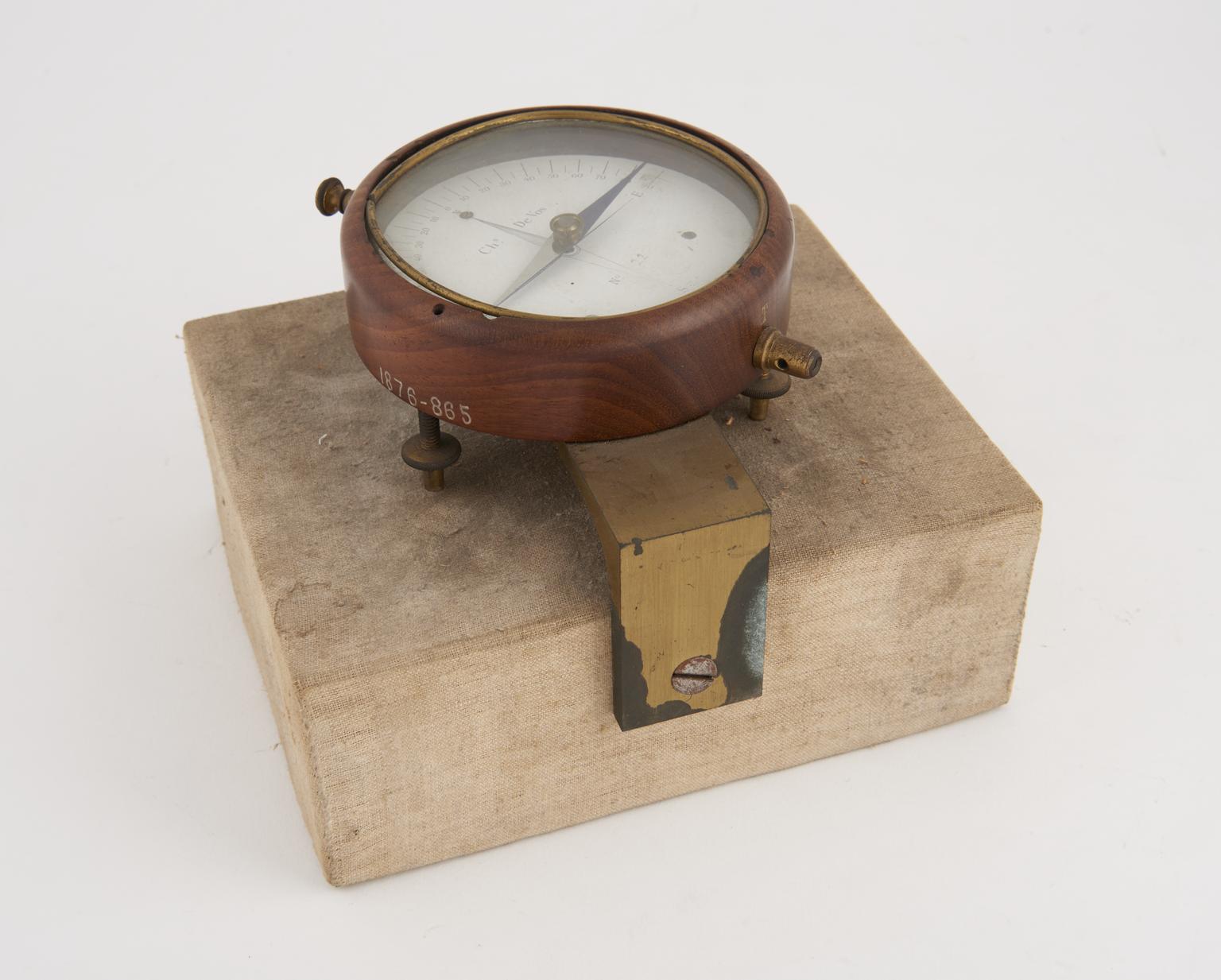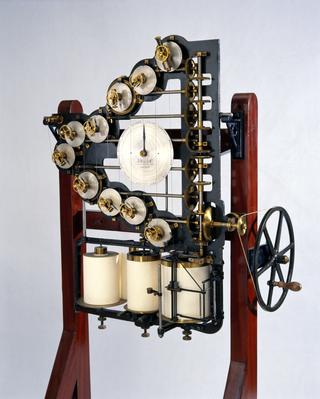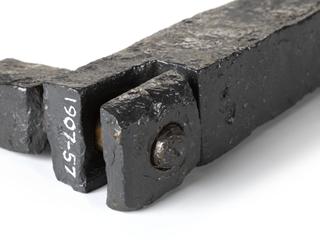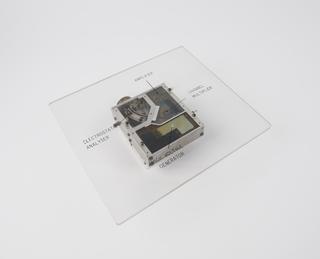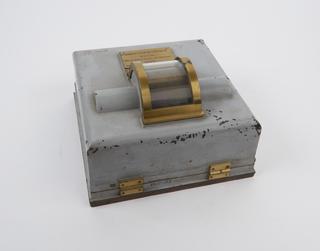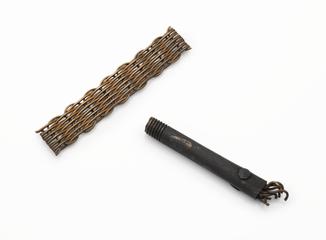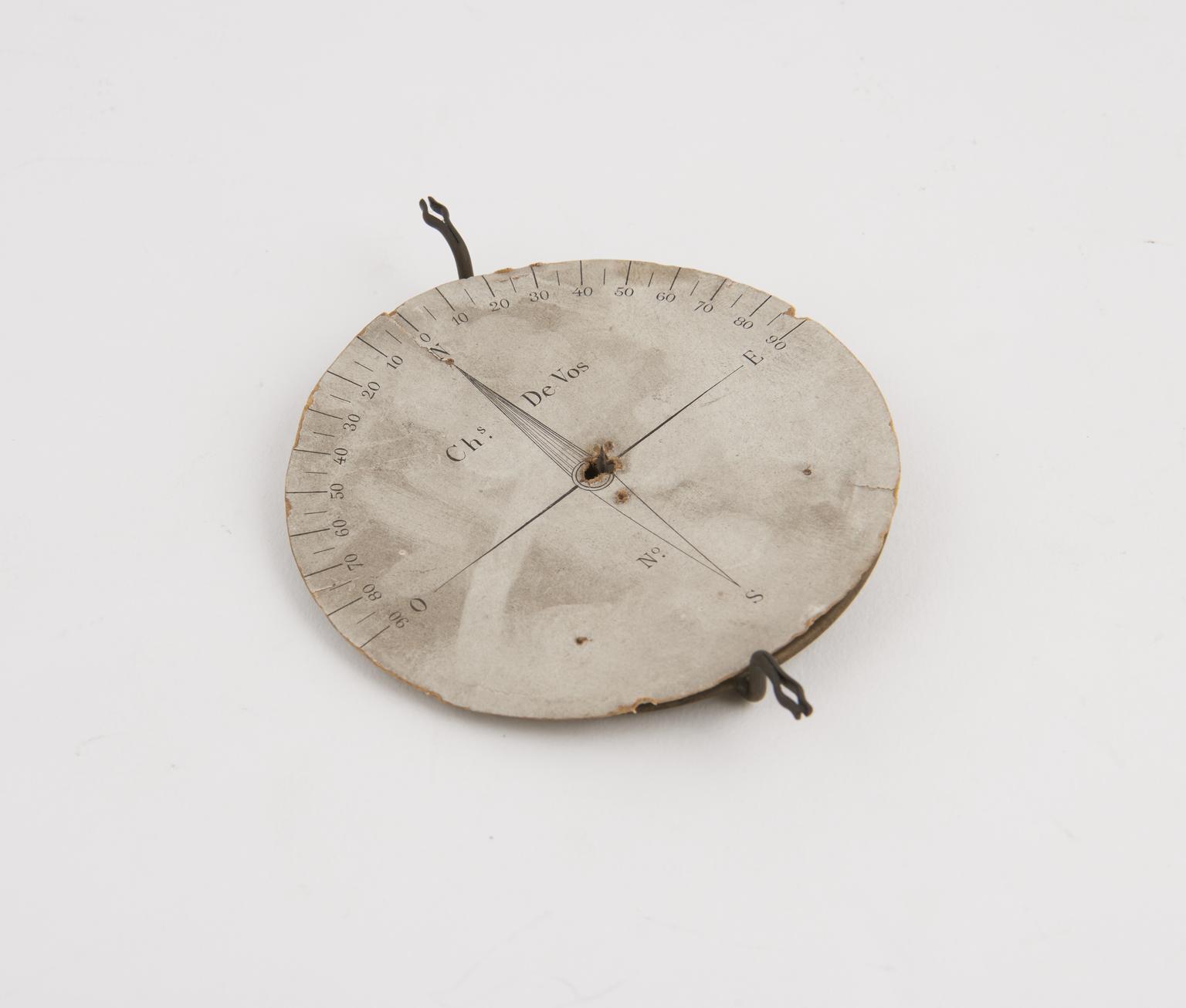
Rhé electrometer, 1875
Rhé electrometer, 1875, devised by Belgian physicist and chemist Prof. Louis Melsens
More
This design of electrometer was devised by Belgian physicist and chemist Prof. Louis Melsens in 1875, based on modifications to an earlier instrument from 1845 by Italian physicist Stefano Giovanni Marianini. It is designed to work in conjunction with lightning conductors positioned on buildings and telegraph wires to measure electrical discharges between the atmosphere and the earth.
The key features of this design are its coil of cooper wire, within which is an unmagnetized iron bar, positioned east to west underneath a north to south facing magnetised needle. When lightning strikes and a surge of electricity moves through the copper coil, the iron bar within is magnetized, which in turn forces the needle to turn. The movements of the needle are measured in degrees by a piece of card. The more intense the surge of electricity, the more the needle will turn in degrees along the card.
Once a recording has been made, the magnetised iron bar must be replaced with a spare un-magnetised one bar in order to make another recording.
This Rhé Electrometer also has a special place in the history of the SMG, being part of the ‘Special Loan Collection of Scientific Apparatus at the South Kensington Museum’ from 1876. This makes this device among the very first objects to be collected by the SMG to represent international scientific innovations.
- Object Number:
- 1876-865/1
- type:
- rhé electrometer, 1875
- Image ©
- The Board of Trustees of the Science Museum
